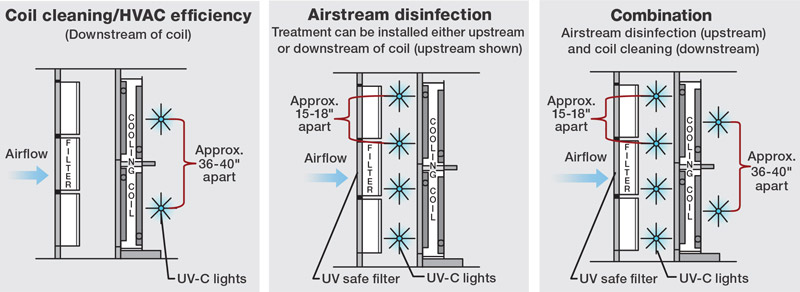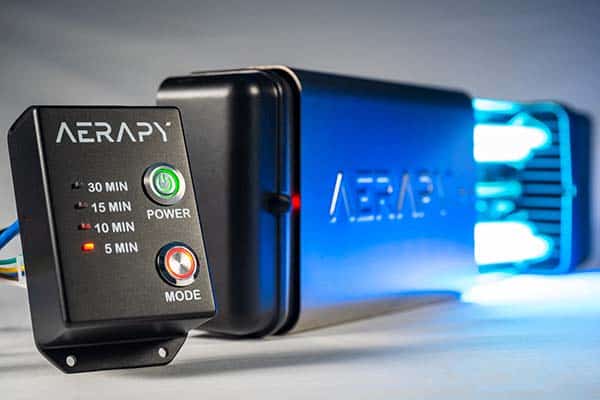Unleashing the Potential of Far UVC Light: Safeguarding Public Spaces
In an era where public wellness and safety have actually ended up being vital, the potential of much UVC light to guard public areas is a topic of expanding interest. We will certainly check out the future ramifications of much UVC light in shaping public wellness and safety, leaving no uncertainty that this emerging innovation is positioned to transform the means we protect our public areas.
What Is Far UVC Light?
Far UVC light refers to a particular wavelength of ultraviolet light that has been located to possess unique residential properties in regards to its capability to efficiently kill microorganisms while being safe for human exposure. Unlike traditional UV light, which can be harmful to human skin and eyes, much UVC light runs at a wavelength of around 222 nanometers, which is not able to penetrate the outer layer of the skin or the tear layer of the eye.
Study has shown that much UVC light is qualified of inactivating a large variety of microorganisms, including germs, viruses, and fungis. This results from its capacity to permeate the outer layers of these microorganisms and harm their DNA or RNA, providing them not able to cause and replicate infection. Moreover, since much UVC light is unable to reach the living cells in the skin and eyes, it does not create any type of harm to human cells.
The unique residential properties of far UVC light make it a perfect tool for sanitation in public spaces. It can be securely made use of in occupied locations, such as healthcare facilities, schools, flight terminals, and public transport, to constantly disinfect air and surface areas, decreasing the threat of transmission of infectious illness. Additionally, its non-toxic nature and absence of recurring chemicals make it an eco-friendly alternative to standard sanitation methods.
Exactly How Does Far UVC Light Safeguard Public Spaces?
Public spaces can be properly guarded by using the one-of-a-kind properties of much UVC light in order to continuously disinfect air and surface areas, reducing the danger of transmission of contagious illness. Far UVC light, with a wavelength variety of 207 to 222 nanometers, has actually been shown to be effective in eliminating germs, infections, and various other pathogens without harming human skin or eyes. This makes it an appealing device for developing safer environments in public spaces such as healthcare facilities, offices, institutions, and flight terminals.
One of the key advantages of much UVC light is its capacity to be utilized continuously in occupied areas. far-uvc. Unlike traditional UV germicidal lights, which release UVC light at a wavelength of 254 nanometers that can be hazardous to human beings, far UVC light can be utilized safely around people. This permits for constant disinfection in locations where people gather, assisting to reduce the spread of infectious illness
Far UVC light can be integrated right into existing ventilation systems or installed as standalone gadgets in public spaces. When used in air disinfection, much UVC light can target air-borne virus, consisting of viruses, as they circulate airborne. This aids to reduce the threat of transmission with respiratory beads. When made use of on surface areas, much UVC light can successfully kill bacteria and infections on high-touch surfaces, such as doorknobs, hand rails, and elevator switches.
Applications of Far UVC Light in Public Spaces

One more application of far UVC light is in the sanitation of surface areas. Far UVC lamps can be strategically placed in public rooms, such as healthcare facilities, colleges, workplaces, and transportation hubs, to continually decontaminate regularly touched surfaces.
Moreover, far UVC light can be used in the sanitation of water. By exposing water to much UVC light, dangerous microbes present in the water can be reduced the effects of, making it risk-free for public consumption. This application is especially helpful in public water fountains, swimming pools, and entertainment water facilities.
Advantages of Far UVC Light Over Standard Disinfection Methods
With its varied practical applications, much UVC light offers numerous advantages over traditional sanitation approaches in public areas. One substantial advantage is its capacity to supply continuous disinfection without the demand for human intervention. Unlike guidebook cleaning approaches, such as wiping surfaces with anti-bacterial options or using UV lights operated by workers, much UVC light can be set up in public areas to continuously decontaminate the air and surfaces without the requirement for constant surveillance or manpower.
One more benefit of far UVC light is its effectiveness against a vast array of microorganisms. Traditional sanitation approaches may not constantly be effective versus all kinds useful source of bacteria, leaving some locations prone to contamination. Much UVC light, on the other hand, has actually been proven to be efficient versus a variety of microorganisms, consisting of fungi, viruses, and microorganisms, making it a dependable option for comprehensive disinfection in public areas.
Additionally, much UVC light is a non-toxic and eco-friendly technique of sanitation. Unlike chemical anti-bacterials, which may position health and wellness dangers and leave dangerous deposits, much UVC light does not generate any hazardous spin-offs or deposits. It is safe for people to be revealed to and does not damage the setting, making it a lasting choice for disinfection in public areas.

The Future of Far UVC Light in Public Wellness and Safety
As the demand for reliable and sustainable disinfection methods remains to expand, the future of far UVC light in public health and safety and security looks promising. Much UVC light has actually revealed wonderful potential in effectively eliminating microorganisms, consisting of germs and viruses, without damaging human skin or eyes. This makes it a safe and reliable alternative for continual sanitation in different public spaces.
One of the essential advantages of much UVC light is its capability to inactivate airborne virus (far-uvc). By installing much UVC lights in medical facilities, colleges, airports, and other crowded areas, we can dramatically lower the danger of disease transmission via the air. This has become a lot more vital due to recent episodes, such as the COVID-19 pandemic
Additionally, much UVC light can be incorporated into existing air flow systems, allowing for continual sanitation of the air as it flows. This means that even precede with high tenancy rates, the danger of infection can be reduced, supplying a much safer setting see page for everybody.
In addition to air sanitation, far UVC light can likewise be made use of to sanitize surface areas. By integrating far UVC light technology right into independent robotics or handheld gadgets, we can efficiently decontaminate typically touched surface areas, such as doorknobs, elevator switches, and handrails.
Verdict
Finally, far UVC light has the possible to transform public wellness and security by properly disinfecting public areas. Its ability to kill microorganisms without harm to human beings makes it an appealing solution for avoiding the spread of contagious conditions. With its numerous advantages over typical disinfection techniques, such as no chemical deposit and continual sanitation, far UVC light holds wonderful guarantee for future applications in securing public areas.
In a period where public wellness and safety and security have come to be extremely important, the potential of far UVC light to protect public areas is a subject of expanding rate of interest. We will explore the future implications of much UVC see post light in shaping public health and wellness and safety, leaving no question that this emerging innovation is positioned to transform the means we guard our public rooms.
Unlike standard UV germicidal lights, which emit UVC light at a wavelength of 254 nanometers that can be hazardous to human beings, much UVC light can be utilized safely around people - far-uvc.In conclusion, far UVC light has the potential to transform public health and safety by efficiently disinfecting public spaces. With its countless advantages over traditional sanitation approaches, such as no chemical residue and constant disinfection, much UVC light holds excellent guarantee for future applications in safeguarding public spaces